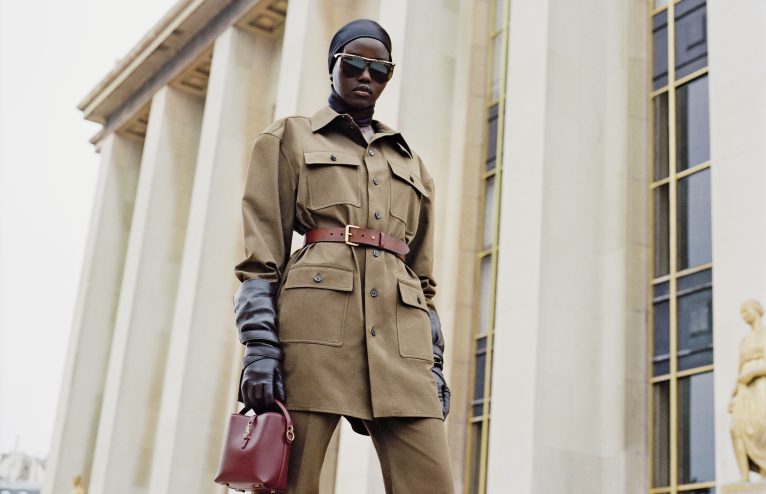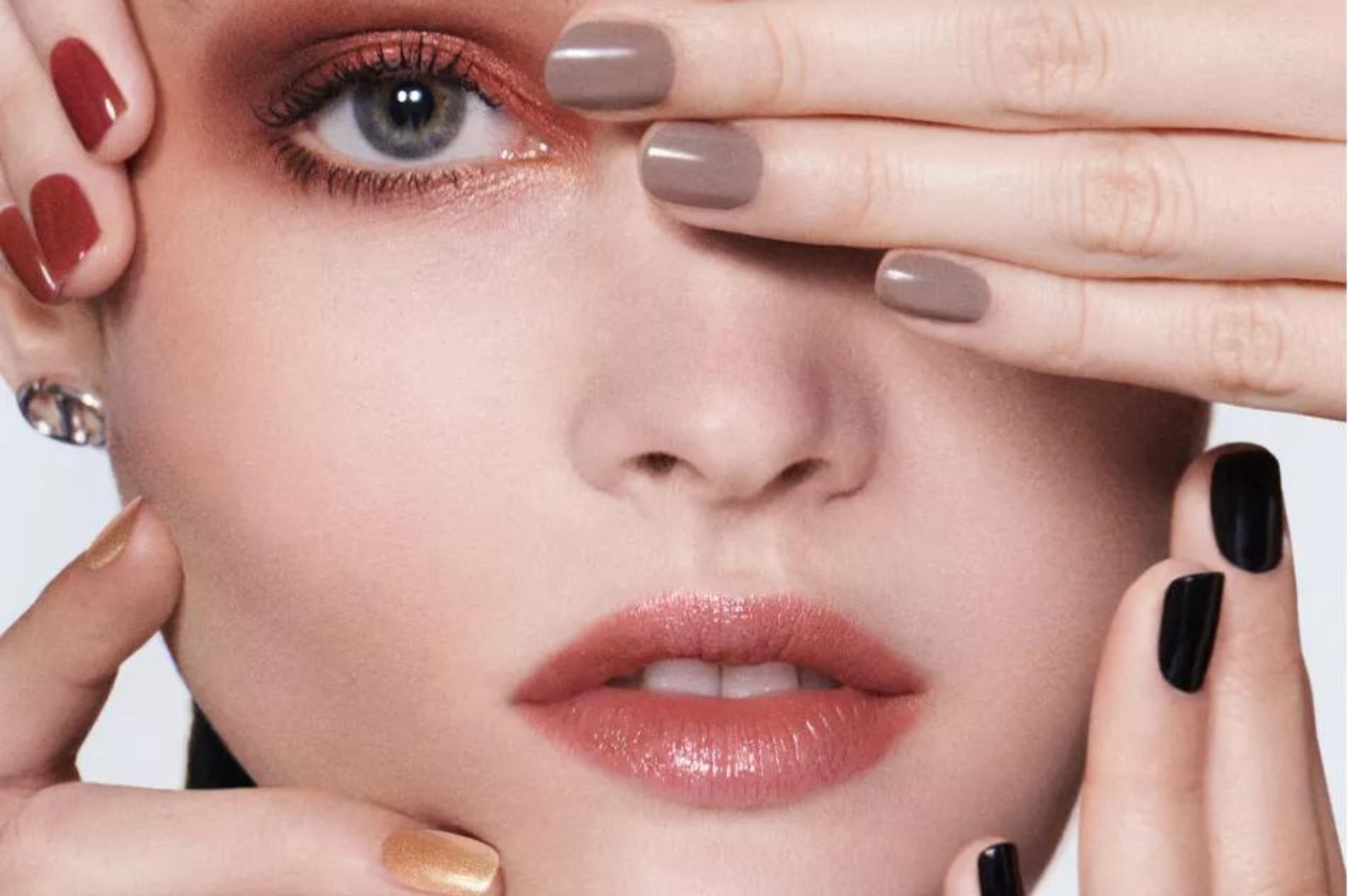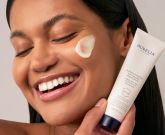If your makeup becomes patchy by lunchtime and completely vanishes by dinner, don’t despair; it’s easier than you think to make your foundation last longer.
Our expert guide to long-lasting foundation covers all the simple oversights you could be making, plus the expert-backed recommendations and application tips to keep your foundation looking flawless for longer – whatever your skin tone or type.
These are the six reasons your foundation isn’t lasting and how to fix it.
1. You rush (or skip) your skincare
It may feel rational to spend the most time on your foundation when trying to perfect your base, but ask any makeup artist and its actually skincare that takes them the longest. That’s why you’ll see 111Skin face masks, SUQQU facials and the LYMA laser all being used backstage at Fashion Month. “Skin preparation is everything,” summarises the makeup artist Morag Ross.
“Great makeup starts with great skincare,” agrees the makeup artist Aimee Connelly. “Think about your face as a canvas – if the canvas is oily, dirty or super porous, the paint won’t sit well or last – and it’s the same for your face. Every face has different needs, but as a starting point it’s always a good idea to ensure you have gently cleansed, hydrated, and, if you err on the side of dry skin, moisturised skin (e.g. with a ceramide-rich cream such as CloudCream). These two to three simple steps are often enough to create that super smooth, hydrated and long-lasting base.”
Product wise: dry skins should seek out a hydrating cleanser boosted with ceramides to help avoid the flakiness that can make makeup look uneven. Then, focus on adding extra moisture to dry areas, including around the nose. A good combination is a hydrating hyaluronic acid-rich serum, locked in with moisturiser for a smooth finish. As for oilier skin, a deep but non-stripping clean can balance sebum levels, limiting shininess that otherwise means makeup slips away. Hyaluronic acid-rich formulas can then provide a smooth canvas for this skin type too – just choose an oil-free, lightweight formula.
2. You’re applying too much
Heavy-handedness is probably one of the biggest reasons for patchy coverage – and you might not even realise that you’re doing it. First and foremost, avoid pumping your foundation straight onto your face as blending out from your cheek or forehead is much more difficult to do evenly and you’ll end up needing to apply more product.
Instead, apply to your hand first and then blend into your skin, using dabbing motions rather than long strokes. This allows for a more even spread. “It’s best to start with just a little bit of product and layer for more intensity than it is to apply a lot and then blend away,” explains the celebrity makeup artist Hannah Martin. Try applying from the edges of your face and working in to avoid a heavy finish across the centre of your face.
Another trick, especially for breakout-prone complexions, is to always apply concealer to blemishes and areas of redness after your foundation. Doing so beforehand can lead to cakiness, especially under the eyes, and often means you end up applying more than you need. Again, apply to your hand first and gently dab over the area, before leaving for 10-15 seconds until you blend in.
3. You’re using your fingers
There’s a lot of reasons you might like using your fingers to apply your makeup – it’s often quick and the warmth of your hands can help blend. However, while it might apply nicely straightaway, it’s probably shortening the longevity of your makeup.
That’s because even if you wash your hands beforehand (and you should to avoid introducing dirt and bacteria), your skin’s natural oils can be transferred to your face via your fingertips, leading to excess oils that diminish makeup throughout the day. That’s why makeup artists like Cher Webb and Hannah Martin always stress the importance of applying foundation with a brush. “A foundation brush will ensure you get an even, buildable application that looks flawless and lasts,” explains Martin.
The shape of your foundation brush matters too. For long-lasting full coverage, you’ll need a kabuki brush – look for one with short, concentrated bristles. If you find your makeup never lasts around your nose and mouth, you may also want to consider a slanted smaller brush, as this allows precise yet still lightweight application. Or, if you really don’t like brushes, damp beauty sponges, such as the original BeautyBlender, can allow you to lightly dab on foundation. It’s for the same reason that powder puffs are starting to trend online as a way to softly apply your makeup.
4. You’re distracted by marketing
It can be hard to look past flashy claims such as ‘up to 24-hour wear’ when searching for a foundation that lasts, but you’re actually much better off considering your specific skin needs before clicking purchase. (After all, when was the last time you actually needed a formula to last quite as long as a whole day).
In general, longwearing foundations tend to have a relatively low oil content (to avoid oils breaking down on the skin), as well as more polymers that keep them in place. But, that also means they can provide a more mattifying finish. Thus, if your concern is keeping drier skin looking radiant and smooth, so your foundation doesn’t fall into your pores, it might be time to investigate the trend for balm foundations. Available as super-nourishing formulas, best applied with a light touch, Kevyn Aucoin’s Foundation Balm and Jones Roads’ What The Foundation are two examples that recently hit the headlines for their coverage.
In comparison, skin types where oiliness starts appearing around lunchtime can lean into the mattifying effect of long-wearing foundations, but avoid those that sit heavily on the skin – a sign they’ll cover well but start to slide. Look to classics such as Dior’s Forever range or new-age serum foundations like Gucci’s Éternité de Beauté or KVD’s Good Apple.
5. You’re wearing the wrong shade
The finish of your foundation is important, but finding the right formula means nothing if you don’t wear the right shade. Not only can the wrong colour make you look washed-out or overly orange from the start; choosing the wrong shade makes any patchiness much more apparent so it appears your base doesn’t last as long.
The technology behind online colour-matching options is getting better, but currently you really can’t beat shopping for your foundation in person. To avoid any pressure to buy, ask the shop assistant at a few brands to give you trial samples in a pot. Then, apply the product yourself at home and in your normal day-to-day light throughout the day.
Importantly, most foundations oxidise a little throughout the day, which means the colour gets a little warmer or darker and therefore noticeable. If this happens, you may benefit from applying primer beforehand to keep a barrier between the formula and your skin’s natural oils. Try Milk Makeup’s Hydro Grip Primer.
As well as personalised colour-matching, you should consider your skin undertones – the real secret to achieving the perfect shade. “The French side of me wants to wear makeup but not look like I’m wearing it, so I researched extensively, and after years of experience I figured out that what made skin look good was all about undertones and texture,” says the beauty brand founder, Sylvie Chantecaille.
To find your skin undertone, use this makeup artist trick: firmly press down on the pulse point on your wrist. Then, check the colour your skin goes. If it is red or blue, you have cool undertones and if it goes more peach or golden you have warm undertones. You’ll notice many brands will now indicate warm, cool or neutral undertones on their shade charts.
6. You’re applying setting products after foundation
Oilier complexions are probably very familiar with setting sprays and powders as ways to keep makeup-slipping shine away. However, it might be time to rethink when you use them. Traditionally, they’ve been marketed for use after foundation, but its an emerging TikTok trend to use them beforehand, as a priming base, and the results have been impressive.
One simple way to try the trend is to mix a spritz of setting spray into your foundation on the back of your hand. Or, apply your loose powder directly onto your face using a powder puff, before following with foundation. Both techniques can avoid setting products accidentally moving your foundation as you apply it and its been widely celebrated for helping avoid product transfer too. It means you tend to use less product too.
As for drier complexions, adding a small amount of setting spray to your hydrating foundation can be useful, but you do want to avoid an overly skin-drying effect that can emphasise uneven texture. So, it’s just as beneficial to double-down on hydration. Try another TikTok trend and mix your foundation with a pump of moisturiser containing polyglutamic acid (an ingredient that challenges even hyaluronic acid for its hydratiing qualities). The result is a dewy, lightweight finish that actually lasts.
We may earn a commission if you buy something from any affiliate links on our site.




















Any Questions or Tips to add?